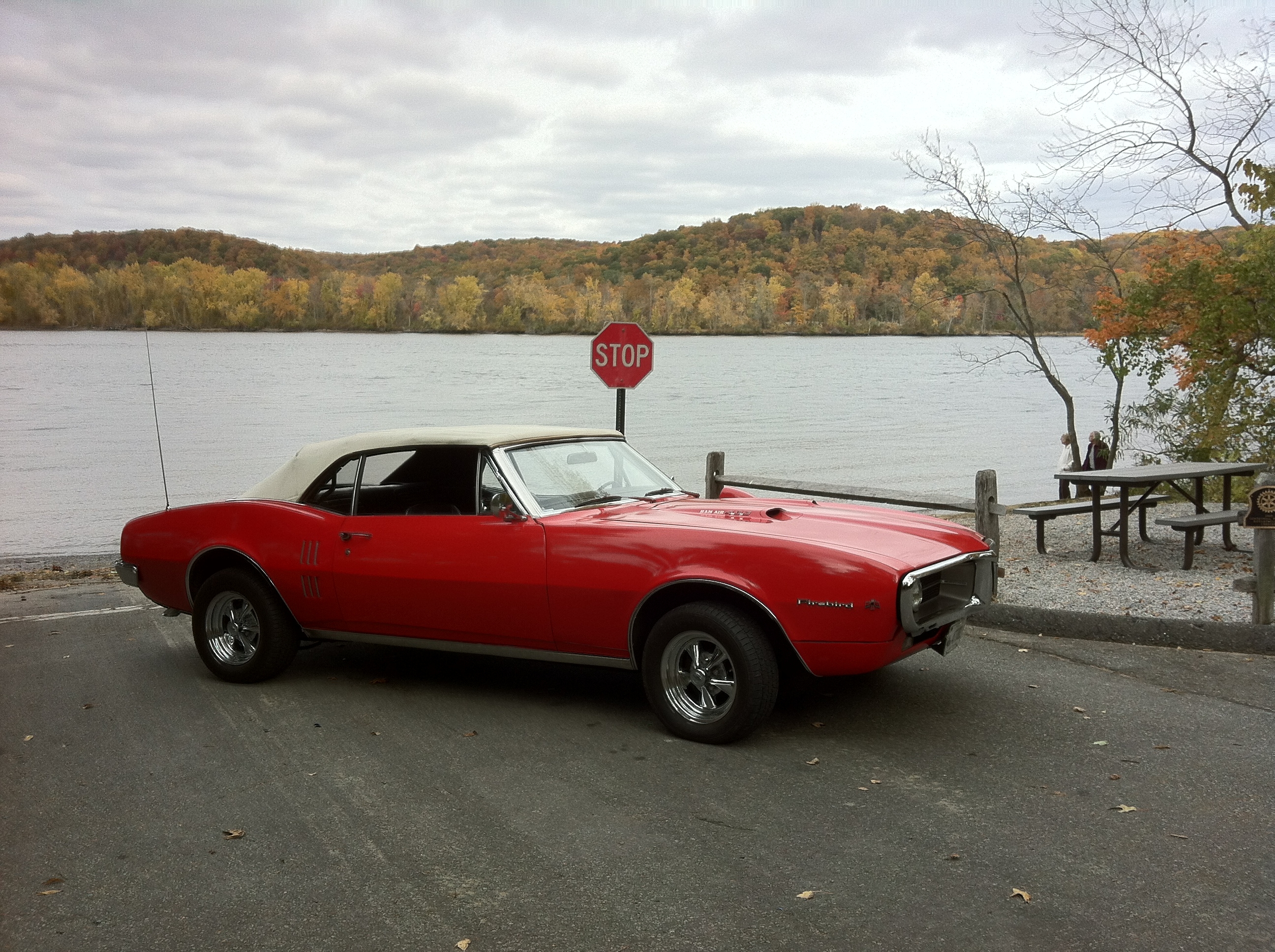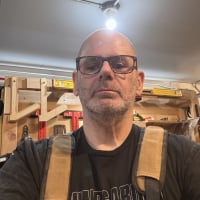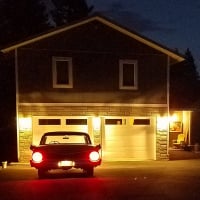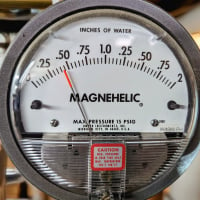Firing rate and turndown
I think I understand that a 5:1 turndown ratio means that a boiler's burner can run at 20% when the demand is low. Any lower than that and the burner will then cycle off.
However, when the burner is running at 20%, does it mean that the actual flame is lowered or does it mean that it will cycle on and off to maintain a lowered amount of input throughout a given time lapse. If that is the case, is that what firing rate means?
This is where I am confused. What exactly is the difference between firing rate and turndown?
Thank you all for your help!
Comments
-
Firing rate is the amount Btu/h being delivered by the boiler at any given time.
Turndown is manipulating that firing rate to a lower rate based on the need of the system to meet the building's heat loss.Steve Minnich0 -
Thank you guys for the explanations!
So will the burner have the ability to adjust its flame?0 -
Yes, when we use the term turndown, we are referring to appliances which can vary their firing rate by turning down the amount of fuel (and hopefully air) sent to the burner(s.)0
-
It's that parentheses that is the real trick! That, and in oil burners (much less so for gas) getting decent atomization and distribution of the fuel -- otherwise one's efficiency goes right out the window (or up the stack...) And then one has to balance the complexity of the gadgetry -- particularly for liquid fuels -- with the benefits...SWEI said:Yes, when we use the term turndown, we are referring to appliances which can vary their firing rate by turning down the amount of fuel (and hopefully air) sent to the burner(s.)
Br. Jamie, osb
Building superintendent/caretaker, 7200 sq. ft. historic house museum with dependencies in New England0 -
This is where neg/reg (aka zero pressure) gas valves really show their stuff. Just change the airflow and the valve meters out a proportional amount of gas.0
-
Indeed. Much easier on gas -- which is, I expect, why one sees it available for gas and rarely for oil. Not to say you can't do it -- gas turbines have been doing it for years, and internal combustion piston engines for even longer -- but keeping the efficiency up high isn't that easy.SWEI said:This is where neg/reg (aka zero pressure) gas valves really show their stuff. Just change the airflow and the valve meters out a proportional amount of gas.
Every work on a Quadrajet carburetor? Never mind an SU? Br. Jamie, osb
Br. Jamie, osb
Building superintendent/caretaker, 7200 sq. ft. historic house museum with dependencies in New England0 -
Oh, man. You just had to remind me. Whenever anyone whines about the "good old days" of automobilia I just laugh.Jamie Hall said:Every work on a Quadrajet carburetor? Never mind an SU?
 2
2 -
Me too. I've worked on my fair share of Carters and QJets...I don't miss it. I ended up specializing in automotive nvh/drivability/electronic controls and I love it. I have a very nice 2001 BMW in my garage right now that started as an odd startup rattle...now it's getting "the works" so to speak.
As far as boiler turndown controls go...do any of the mod/con manufacturers utilize an oxygen (lambda) sensor for fine tuning the mixture? It seems like it would be the optimum application for overall control of combustion.
But maybe I'm wrong, too...as I said, I'm more knowledgeable on bimmers than boilers.Ford Master Technician, "Tinkerer of Terror"
Police & Fire Equipment Lead Mechanic, NW WI
Lover of Old Homes & Gravity Hot Water Systems0 -
-
Um... well, maybe... but if I had to pick one for a build, I'd pick a nice big Carter. Maybe not as efficient, but not as fussy either. I always found it interesting that some of the top end GM muscle cars used Carters, but that the same basic engine in a more shall we say civilised critter would have a Quadrajet. (some of the big block Chevys were that way, and the Buick nailheads, for example).ChrisJ said:Seriously?
Qjets are easy if you follow the rules.
Same as installing boilers.Br. Jamie, osb
Building superintendent/caretaker, 7200 sq. ft. historic house museum with dependencies in New England0 -
I find almost all carbs to be an interesting art form, but extremely limited in their abilities over the life of a power train. Glad their days are over.
Also glad to hear veissmann is doing that with lambda sensors...I'm kind of surprised that everyone isn't, considering the control ability and fine-tuning possibilities. If we're going to have so much complexity in modern boilers anyway (relative to a conventional cast iron unit), might as well take that extra step.Ford Master Technician, "Tinkerer of Terror"
Police & Fire Equipment Lead Mechanic, NW WI
Lover of Old Homes & Gravity Hot Water Systems0 -
I like them because I've always found them to be incredibly responsive when setup right. That and they work great on applications needing anything from 300 to 750 CFM.Jamie Hall said:
Um... well, maybe... but if I had to pick one for a build, I'd pick a nice big Carter. Maybe not as efficient, but not as fussy either. I always found it interesting that some of the top end GM muscle cars used Carters, but that the same basic engine in a more shall we say civilised critter would have a Quadrajet. (some of the big block Chevys were that way, and the Buick nailheads, for example).ChrisJ said:Seriously?
Qjets are easy if you follow the rules.
Same as installing boilers.
Basically, a one size fits all.Single pipe 392sqft system with an EG-40 rated for 325sqft and it's silent and balanced at all times.
0 -
True, very true. But the muscle I had -- a '66 Stage II Buick GS -- used a 750 cfm Carter with mechanical secondaries and a hand choke! Came that way from the factory. The Carter was quite adequate for the rev. limit (6500 rpm/745 cfm) and had the nice advantage in that regard that it choked before the lifters gave up. Handy... there was no way to get that puppy to idle smoothly, but I attributed that to the high overlap cam. Most Buicks used the big Quadrajets; this was just the stage II version (and was only one of a number of invisible -- but important -- differences in the Stage II power train. That car was a beast in traffic or bad weather, but on the strip...ChrisJ said:
I like them because I've always found them to be incredibly responsive when setup right. That and they work great on applications needing anything from 300 to 750 CFM.Jamie Hall said:
Um... well, maybe... but if I had to pick one for a build, I'd pick a nice big Carter. Maybe not as efficient, but not as fussy either. I always found it interesting that some of the top end GM muscle cars used Carters, but that the same basic engine in a more shall we say civilised critter would have a Quadrajet. (some of the big block Chevys were that way, and the Buick nailheads, for example).ChrisJ said:Seriously?
Qjets are easy if you follow the rules.
Same as installing boilers.
Basically, a one size fits all. ) Br. Jamie, osb
) Br. Jamie, osb
Building superintendent/caretaker, 7200 sq. ft. historic house museum with dependencies in New England0 -
I have a 67 Pontiac Firebird 400 Ram Air conv, had a lot of Pontiac's, GM products with Quadrajets, great carb, great economy and power, the thing is rebuild time is best done in the winter, sit down at a table for a day or so and take your time.
Currently it has a Edelbrock Thunder and I'll probably go back to the quad.
The big problem with quads is the lead seals in the bottom go and leak gas into the engine, you have to clean them up and epoxy them on a rebuild.
1 -
First year Firebird has some wild history, GM had wars between the divisions, Chevy had the Camaro and tried to stick it to Pontiac by giving them the platform late, Delorean sat his people down and said "I want everything we have in this, OHC 6 to everything in the GTO", it actually has a better front end and rear than the Camaro plus the 400.
They only made 6 Ram Air convertibles in 67 and none survive so I made a tribute, it's as accurate as I could get down to the cam and the ram air package, so be careful if you see one advertised for sale, even Hemmings lists them in value sheets but they do not exist, PHS confirms it.0 -
Did that ram air actually work, or was it like the GTO where it actually pulls a vacuum against the engine because that spot looked cool, but works terrible?GreenGene said:First year Firebird has some wild history, GM had wars between the divisions, Chevy had the Camaro and tried to stick it to Pontiac by giving them the platform late, Delorean sat his people down and said "I want everything we have in this, OHC 6 to everything in the GTO", it actually has a better front end and rear than the Camaro plus the 400.
They only made 6 Ram Air convertibles in 67 and none survive so I made a tribute, it's as accurate as I could get down to the cam and the ram air package, so be careful if you see one advertised for sale, even Hemmings lists them in value sheets but they do not exist, PHS confirms it.Single pipe 392sqft system with an EG-40 rated for 325sqft and it's silent and balanced at all times.
0 -
Never heard of them creating a vacuum, they work, the main issue was 67-68 had no wet weather provision, you ran the risk of blowing your engine if it was pouring out, you were to keep your regular air filter set up in the trunk, no ****, and switch it out, in 69 they came out with the valving you opened from the dash.
The real joke of the day was the hp claims, way under because GM had a 1hp per 10lb rule and if you check your cars weight you'll find the hp was similar, hmmm, now let's look at the Ram Air II, 400, 10.75-1 comp, 320 510 lift cam, 366 hp??? with the standard 400 at 360??? there's no way.
Ram Air IV was the same engine with 1.65 lifters, I & III are basically the same with the inlet valve difference, the II & IV were pretty radical, wouldn't idle below 1000, they were 2500rpm and up motors, a lot of people that got the IV switched the rockers back 1.5, it was just too radical. My buddy had a 69 Camaro 427 Motion that was wild, one scary car.
http://www.musclecarfilms.com/1969_Firebird_Ram_Air_setups.html0 -
The other thing mind blowing is in 69 the Ram Air IV Judge was tested, I still have the magazine article, they couldn't get it to hook up because of the polyglas tires, radials weren't out yet and they didn't use slicks, they had to ease out and still smoked down the strip running 13.10 to 12.9, these were fast cars if you could get them to grab the street.0
-
Getting them to stick was indeed a problem! I had a real advantage with my Buick -- it was a convertible, and was significantly heavier (the frame was reinforced like you wouldn't believe) than the coupes were so it stuck a lot better, and the extra weight didn't bother the acceleration that much. It also had a 4.10 Detroit Locker diff -- which is one reason it was a bear in bad weather (a tad too much enthusiasm on a wet road and you were headed back the way you came).GreenGene said:The other thing mind blowing is in 69 the Ram Air IV Judge was tested, I still have the magazine article, they couldn't get it to hook up because of the polyglas tires, radials weren't out yet and they didn't use slicks, they had to ease out and still smoked down the strip running 13.10 to 12.9, these were fast cars if you could get them to grab the street.
The nailhead was an interesting engine -- it didn't get no respect, as Rodney used to say. Mine was officially rated at 325 horsepower (there's your 10 to 1 rule!). I never did put it on a dynamometer, but there's no way that number was right. It also had buckets of torque -- which led to the other oddity on those Buicks: a three speed stick shift (Hurst). Why? Because there was too much torque, and the intermediate shaft on the only four speed that would fit in the chassis wasn't big enough...
The comment on rarity is right -- to the best of my recollection, there was less than 1,000 '66 Buick GS's made, and of that perhaps 300 had the stage II mods -- and perhaps 20 of those were convertibles. Mine is in California, now, on the show circuit. I'd love to see it again...Br. Jamie, osb
Building superintendent/caretaker, 7200 sq. ft. historic house museum with dependencies in New England1 -
-
-
actually funny you should mention convertibles and traction, mine (above) is the same deal, they over engineered them, they way the rear is set up for the convertible it has almost a built in traction bar effect and with the TA radials I'm running now I go easy with it,. it bangs too hard, after I did the Ram Air makeover, the cam, etc, 3:42 rear it lifts the front drivers side of the car when you get on it and becomes unpredictable, may chain it downJamie Hall said:
Getting them to stick was indeed a problem! I had a real advantage with my Buick -- it was a convertible, and was significantly heavier (the frame was reinforced like you wouldn't believe) than the coupes were so it stuck a lot better, and the extra weight didn't bother the acceleration that much. It also had a 4.10 Detroit Locker diff -- which is one reason it was a bear in bad weather (a tad too much enthusiasm on a wet road and you were headed back the way you came).GreenGene said:The other thing mind blowing is in 69 the Ram Air IV Judge was tested, I still have the magazine article, they couldn't get it to hook up because of the polyglas tires, radials weren't out yet and they didn't use slicks, they had to ease out and still smoked down the strip running 13.10 to 12.9, these were fast cars if you could get them to grab the street.
The nailhead was an interesting engine -- it didn't get no respect, as Rodney used to say. Mine was officially rated at 325 horsepower (there's your 10 to 1 rule!). I never did put it on a dynamometer, but there's no way that number was right. It also had buckets of torque -- which led to the other oddity on those Buicks: a three speed stick shift (Hurst). Why? Because there was too much torque, and the intermediate shaft on the only four speed that would fit in the chassis wasn't big enough...
The comment on rarity is right -- to the best of my recollection, there was less than 1,000 '66 Buick GS's made, and of that perhaps 300 had the stage II mods -- and perhaps 20 of those were convertibles. Mine is in California, now, on the show circuit. I'd love to see it again...
one other thing, there's only one Octane Booster that really works Lucas, but don't over add it , like every other fill is enough0 -
My parents friends had a 69 Buick skylark, family car but 2 door and fast, I wanted it but they traded it for another car.
My parents car was a 67 Ford Galaxie 500 fastback with the 390, what a fast car, wanted it for my first car but dad said no, he sold it to a guy that worked at a station in town, THEN almost everyday on the bus going to HS I saw the car heading to town with aluminum slots all jacked up, I was dying, a few months later I saw the car on the side of the station totaled.0 -
Cheer up, @GreenGene -- the reason I sold my Buick was that my son was old enough to drive, and I figured he'd kill himself with it. I still wish I had it, though...Br. Jamie, osb
Building superintendent/caretaker, 7200 sq. ft. historic house museum with dependencies in New England0 -
I was at Ft Benning in '68 when a new guy coming back from 'Nam came into the unit. he took his 13 months pay and bought himself a new super bee with a hemi in it and four on the floor.
He got chased by the cops a few times but they never caught him. That was a dangerous car.
BobSmith G8-3 with EZ Gas @ 90,000 BTU, Single pipe steam
Vaporstat with a 12oz cut-out and 4oz cut-in
3PSI gauge0 -
Quads are great, have never found a fuel metering device that is capable of the longevity of these things. Best throttle response and fuel efficiency over average on all the carbs. They are go to carb for boats.
The only problem with them was that they were not a Holley 4150. The 4150 had the ability to deluge fuel accurately at WOT and when that was your MO that seemed to be your carb.
0
Categories
- All Categories
- 87.4K THE MAIN WALL
- 3.2K A-C, Heat Pumps & Refrigeration
- 61 Biomass
- 429 Carbon Monoxide Awareness
- 120 Chimneys & Flues
- 2.1K Domestic Hot Water
- 5.8K Gas Heating
- 115 Geothermal
- 167 Indoor-Air Quality
- 3.7K Oil Heating
- 77 Pipe Deterioration
- 1K Plumbing
- 6.5K Radiant Heating
- 395 Solar
- 15.7K Strictly Steam
- 3.4K Thermostats and Controls
- 56 Water Quality
- 51 Industry Classes
- 50 Job Opportunities
- 18 Recall Announcements







